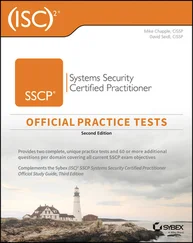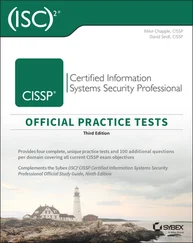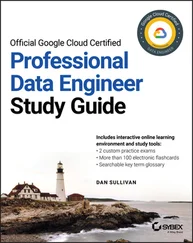A process for planning, implementing, evaluating, and documenting remedial actions to address any deficiencies in the information security policies, procedures, and practices of the organization
Procedures for detecting, reporting, and responding to security incidents
Plans and procedures to ensure continuity of operations for information systems that support the operations and assets of the organization
FISMA places a significant burden on federal agencies and government contractors, who must develop and maintain substantial documentation of their FISMA compliance activities.
Federal Cybersecurity Laws of 2014
In 2014, President Barack Obama signed a series of bills into law that modernized the federal government's approach to cybersecurity issues.
The first of these was the confusingly named Federal Information Systems Modernization Act (also bearing the acronym FISMA). The 2014 FISMA modified the rules of the 2002 FISMA by centralizing federal cybersecurity responsibility with the Department of Homeland Security. There are two exceptions to this centralization: defense-related cybersecurity issues remain the responsibility of the secretary of defense, and the director of national intelligence bears responsibility for intelligence-related issues.
Second, Congress passed the Cybersecurity Enhancement Act, which charges NIST with responsibility for coordinating nationwide work on voluntary cybersecurity standards. NIST produces the 800 series of Special Publications related to computer security in the federal government. These are useful for all security practitioners and are available for free online at csrc.nist.gov/publications/sp800.
The following are commonly used NIST standards:
NIST SP 800-53: Security and Privacy Controls for Federal Information Systems and Organizations. This standard is required for use in federal computing systems and is also commonly used as an industry cybersecurity benchmark.
NIST SP 800-171: Protecting Controlled Unclassified Information in Nonfederal Information Systems and Organizations. Compliance with this standard's security controls (which are quite similar to those found in NIST 800-53) is often included as a contractual requirement by government agencies. Federal contractors must often comply with NIST SP 800-171.
The NIST Cybersecurity Framework (CSF) is a set of standards designed to serve as a voluntary risk-based framework for securing information and systems.
The third law from this wave of new requirements was the National Cybersecurity Protection Act. This law charged the Department of Homeland Security with establishing a national cybersecurity and communications integration center. The role of this center is to serve as the interface between federal agencies and civilian organizations for sharing cybersecurity risks, incidents, analysis, and warnings.
Intellectual Property (IP)
America's role in the global economy is shifting away from a manufacturer of goods and toward a provider of services. This trend also shows itself in many of the world's large industrialized nations. With this shift toward providing services, intellectual property (IP) takes on an increasingly important role in many firms. Indeed, it is arguable that the most valuable assets of many large multinational companies are simply the brand names that we've all come to recognize. Company names such as Dell, Procter & Gamble, and Merck bring instant credibility to any product. Publishing companies, movie producers, and artists depend on their creative output to earn their livelihood. Many products depend on secret recipes or production techniques—take the legendary secret formula for Coca-Cola or KFC's secret blend of herbs and spices, for example.
These intangible assets are collectively referred to as intellectual property (IP), and a whole host of laws exist to protect the rights of their owners. After all, it simply wouldn't be fair if a bookstore bought only one copy of each author's book and made copies for all of its customers—that would deprive the author of the benefits of their labor. In the following sections, we'll explore the laws surrounding the four major types of intellectual property—copyrights, trademarks, patents, and trade secrets. We'll also discuss how these concepts specifically concern information security professionals. Many countries protect (or fail to protect) these rights in different ways, but the basic concepts ring true throughout the world.
 Some countries are notorious for violating intellectual property rights and are world renowned for their blatant disregard of copyright and patent law. If you're planning to do business in countries where this is a problem, you should definitely consult with an attorney who specializes in this area.
Some countries are notorious for violating intellectual property rights and are world renowned for their blatant disregard of copyright and patent law. If you're planning to do business in countries where this is a problem, you should definitely consult with an attorney who specializes in this area.
Copyright and the Digital Millennium Copyright Act
Copyright law guarantees the creators of “original works of authorship” protection against the unauthorized duplication of their work. Eight broad categories of works qualify for copyright protection:
Literary works
Musical works
Dramatic works
Pantomimes and choreographic works
Pictorial, graphical, and sculptural works
Motion pictures and other audiovisual works
Sound recordings
Architectural works
There is precedent for copyrighting computer software—it's done under the scope of literary works. However, it's important to note that copyright law protects only the expression inherent in computer software—that is, the actual source code. It does not protect the ideas or process behind the software. There has also been some question over whether copyrights can be extended to cover the “look and feel” of a software package's graphical user interface. Court decisions have gone in both directions on this matter; if you will be involved in this type of issue, you should consult a qualified intellectual property attorney to determine the current state of legislation and case law.
There is a formal procedure to obtain a copyright that involves sending copies of the protected work along with an appropriate registration fee to the U.S. Copyright Office. For more information on this process, visit the office's website at www.copyright.gov. However, officially registering a copyright is not a prerequisite for copyright enforcement. Indeed, the law states that the creator of a work has an automatic copyright from the instant the work is created. If you can prove in court that you were the creator of a work (perhaps by publishing it), you will be protected under copyright law. Official registration merely provides the government's acknowledgment that they received your work on a specific date.
Copyright ownership always defaults to the creator of a work. The exceptions to this policy are works for hire. A work is considered “for hire” when it is made for an employer during the normal course of an employee's workday. For example, when an employee in a company's public relations department writes a press release, the press release is considered a work for hire. A work may also be considered a work for hire when it is made as part of a written contract declaring it as such.
Current copyright law provides for a lengthy period of protection. Works by one or more authors are protected until 70 years after the death of the last surviving author. Works for hire and anonymous works are provided protection for 95 years from the date of first publication or 120 years from the date of creation, whichever is shorter.
In 1998, Congress recognized the rapidly changing digital landscape that was stretching the reach of existing copyright law. To help meet this challenge, it enacted the hotly debated Digital Millennium Copyright Act (DMCA). The DMCA also serves to bring U.S. copyright law into compliance with terms of two World Intellectual Property Organization (WIPO) treaties.
Читать дальше

 Some countries are notorious for violating intellectual property rights and are world renowned for their blatant disregard of copyright and patent law. If you're planning to do business in countries where this is a problem, you should definitely consult with an attorney who specializes in this area.
Some countries are notorious for violating intellectual property rights and are world renowned for their blatant disregard of copyright and patent law. If you're planning to do business in countries where this is a problem, you should definitely consult with an attorney who specializes in this area.










